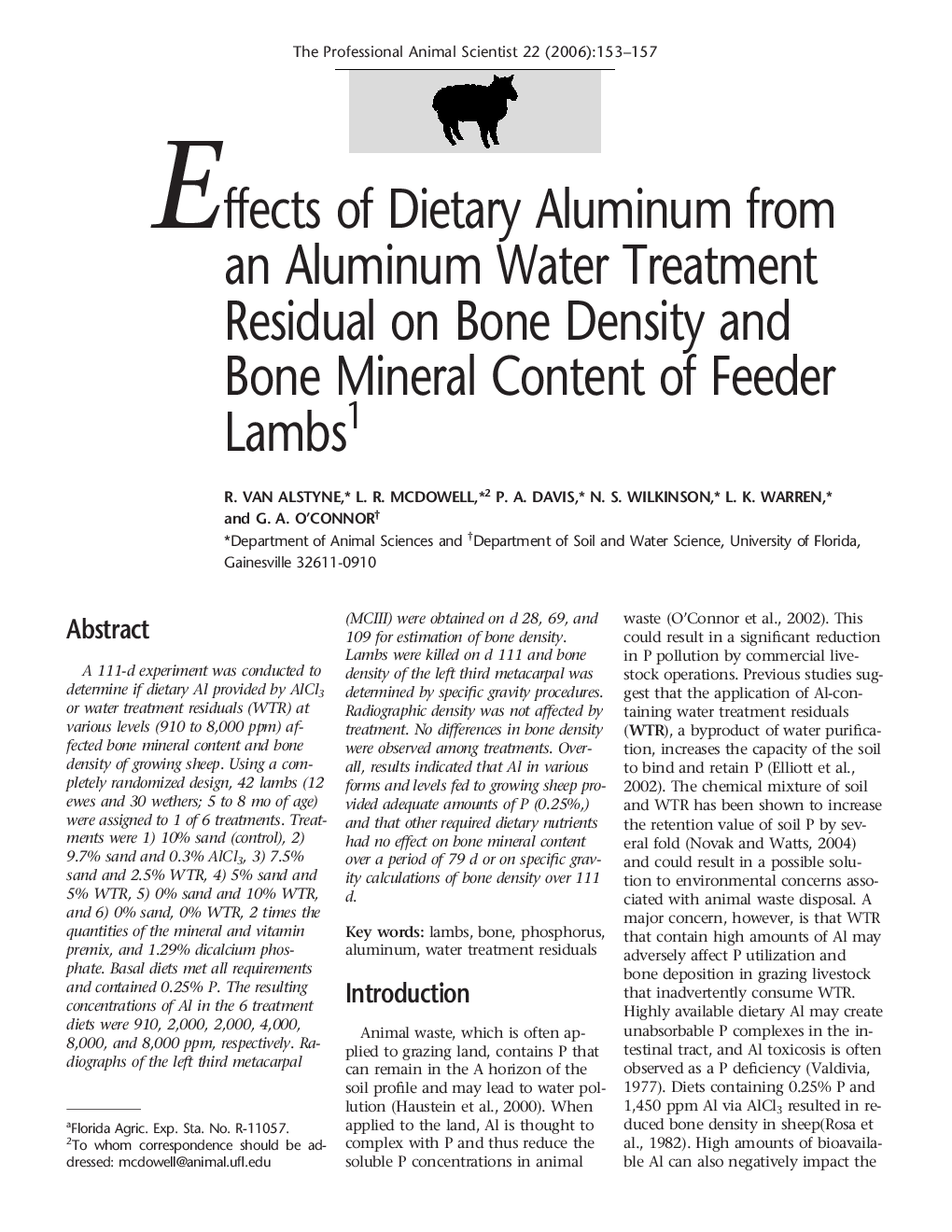| Article ID | Journal | Published Year | Pages | File Type |
|---|---|---|---|---|
| 2454555 | The Professional Animal Scientist | 2006 | 5 Pages |
Abstract
A 111-d experiment was conducted to determine if dietary Al provided by AlCl3 or water treatment residuals (WTR) at various levels (910 to 8,000 ppm) affected bone mineral content and bone density of growing sheep. Using a completely randomized design, 42 lambs (12 ewes and 30 wethers; 5 to 8 mo of age) were assigned to 1 of 6 treatments. Treatments were 1) 10% sand (control), 2) 9.7% sand and 0.3% AlCl3, 3) 7.5% sand and 2.5% WTR, 4) 5% sand and 5% WTR, 5) 0% sand and 10% WTR, and 6) 0% sand, 0% WTR, 2 times the quantities of the mineral and vitamin premix, and 1.29% dicalcium phosphate. Basal diets met all requirements and contained 0.25% P. The resulting concentrations of Al in the 6 treatment diets were 910, 2,000, 2,000, 4,000, 8,000, and 8,000 ppm, respectively. Radiographs of the left third metacarpal (MCIII) were obtained on d 28, 69, and 109 for estimation of bone density. Lambs were killed on d 111 and bone density of the left third metacarpal was determined by specific gravity procedures. Radiographic density was not affected by treatment. No differences in bone density were observed among treatments. Overall, results indicated that Al in various forms and levels fed to growing sheep provided adequate amounts of P (0.25%,) and that other required dietary nutrients had no effect on bone mineral content over a period of 79 d or on specific gravity calculations of bone density over 111 d.
Related Topics
Life Sciences
Agricultural and Biological Sciences
Animal Science and Zoology
Authors
R. Van Alstyne, L.R. Mcdowell, P.A. Davis, N.S. Wilkinson, L.K. Warren, G.A. O'Connor,
